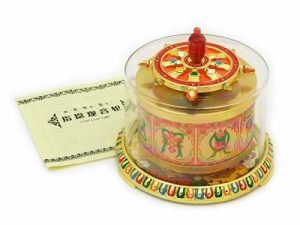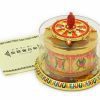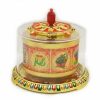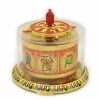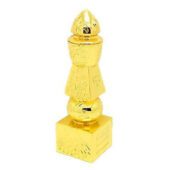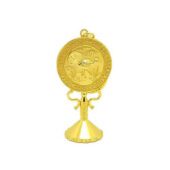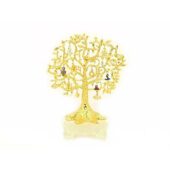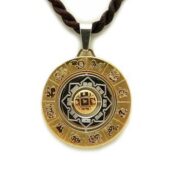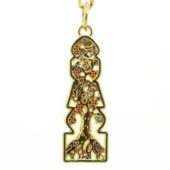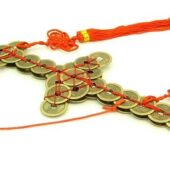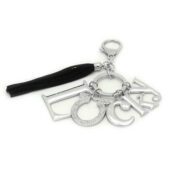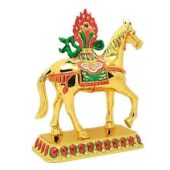Description
This is a Tibetan Prayer Wheel, also known as Mani Wheels by the Tibetans. It made of a metal cylindrical body, mounted on a wooden handle. The cylinder embossed with the Buddhist 8 Auspicious Symbols and Tibetan mantra script. The top of the cylinder is adorned with the Wheel of Life. Additionally, the centre of which has a handle to help keep the wheel turning with a slight rotation of the wrist.
The top of the wheel is removable to reveal a mantra roll in the protective case. The mantra is a tightly wound scroll made of thin paper. Also, it printed with many copies of the 8 auspicious objects. Buddhists believe that each turn of the cylinder generates as much merit as reciting the mantras out loud. “Just touching and turning a prayer wheel brings incredible purification. Besides, it accumulates unbelievable merit.” Quoting Lama Zopa, Rinpoche.
Found all over Tibet and in areas influenced by Tibetan culture. Moreover, the use of a Tibetan Prayer Wheel is an ancient and mystical practice that has long been popular with Buddhists in these areas. It is popular with its ability to bless the environment. Besides, it spreads spiritual blessings and well being, transform bad luck into good luck. Also, it promotes healing and increases compassion. Lastly, it assists practitioners on their journeys to enlightenment.
The Eight Auspicious Objects, known in Sanskrit as Ashtamangala are the central symbols of Tibetan Buddhism. They are on Tibetan prayer flags, inserted in prayer wheels, incorporated into mandalas and thangkas, and used in other forms of ritual art. Each symbol represents an aspect of Buddhist teaching. When they appear together, their powers multiply.
The eight auspicious symbols of Tibetan Buddhism consist of a:
- parasol
- pair of fishes
- treasure vase
- a lotus
- white-spiralling conch shell
- endless knot
- victory banner
- golden wheel

